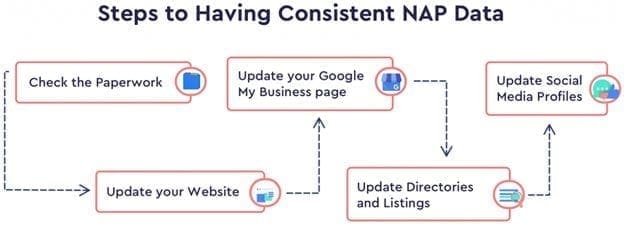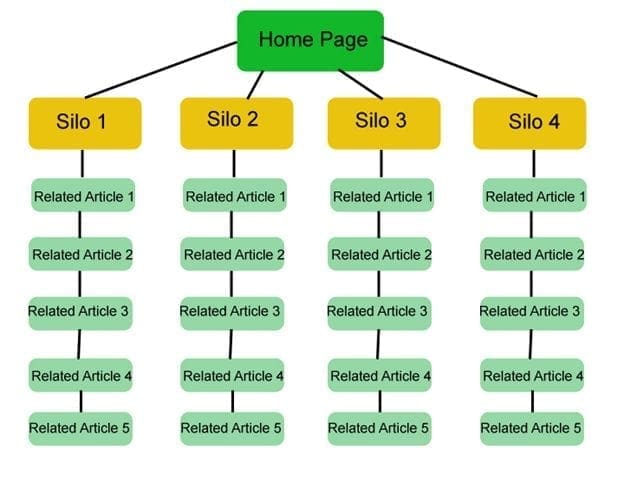Can you remember the last time you looked for something online? Maybe the local business services are found near you.
You probably clicked on any of the first three listings displayed on the SERPs. And I just wanted to let you know that you are not alone in doing that. Studies have proven that 90% of people don’t wander past the first page of the SERPs.
So, what does that mean for you if you run a local business?
Well, since 87% of customers have searched for a local business address or phone number online and most local searches are done because of an immediate need, it’s safe to say that if your business doesn’t show up immediately, you’re not going to turn that searcher into your new customer.
It’s well-known that getting to the top of Google’s search results takes work. But it’s almost nigh impossible for a business with more than one location.
But it doesn’t have to be. And what you need is local SEO for multiple locations.
How to Do Local SEO for Multiple Locations
Local SEO is very useful for businesses, as it allows them to promote themselves online to every local customer within their geographic area. With that fact in mind, one must ask what the goal of local SEO would be for businesses with multiple business locations.
The main idea is to be listed in the Google Maps listings found on the first page of search results. Google is capable of picking out search queries that clearly have “local intent, ” and it’s time for you to take advantage of that capability.
#1 Submit business NAP to national directories

NAP is a critical element of a successful local SEO campaign. It stands for name, address, and phone number. For this reason, the NAP must be listed on every page without interfering with users’ experience.
One popular way to do that is to include the NAP in your website’s header and footer.
In addition, could you submit your NAP to national directories, not just local ones? You have plenty to choose from. There are Yellow Pages, Manta, Hotfrog, etc., among others. They are one of the most prominent players in the game regarding online directories.
When search engines like Google and Bing find your NAP listed on directories like these and every page of your website, it leaves little room for doubt about where your businesses are located across multiple locations.
Remember to submit NAP directories consistently. If you change this information, be sure to keep your other NAP entries in directories up-to-date.
#2 Claim your local map listings for each business location
Google My Business listings are your lifeblood to getting more customers. In the past year alone, 64% of consumers have referred to Google My Business listings to find local businesses’ phone numbers and addresses. So, after you submit your NAP to national online directories, remember to claim your map listing.
By claiming your local map listings, you ensure that customers can find you and see the outside of your establishment via Street View.


#3 Encourage local customers to leave reviews
If you want roofing repairs or HVAC installation, it’s only natural to look for the best services. You usually come across these top-tier service providers through personal recommendations or stellar reviews found on the net that prove their credibility.
I’d like to point out that collecting customer feedback within your service area lets your other prospective customers know how competent your business is. It reassures them that they can trust you to provide excellent services. In addition, this also works wonders for establishing yourself as a business authority in your local area.


Be sure your reviews are recent, too. After you complete a service, reach out to your satisfied clients with follow-up emails containing a direct link to company profiles or a form for them to leave reviews.
#4 Use schema markup language
Schema markup language is a universal website coding added to your website. Every major search engine recognizes it.


But does structured data have a resounding effect on rankings? Whether it does or doesn’t has been the subject of much discussion and experimentation. For now, there’s no conclusive evidence that markups improve rankings. However, there are indications that search results with more extensive rich snippets get better CTRs.
The most significant advantage is that schema markup language tells search engines exactly what your web page is about.
Structured data can mark up all sorts of items, from events to products to recipes. It’s often used to provide additional information about an organization, person, place, event, creative work, or product.
This helps search engines understand your business information exactly how you want it to be understood. Thus, you also get more accurate local search listings on SERPs.
#5 Ensure your site is local search traffic-ready
Remember to optimize your website’s content for local search traffic. Here are a couple of optimization tips that you can easily do for yourself:
-
Onsite content: Make sure your web content is prepped for local search. Mention your service areas and use location-specific keywords to give your web page a better chance at ranking locally. Plus, your content must be conversational, not keyword-stuffed, and not forced.
-
Page titles and subheadings: Instead of just HVAC installation as the main heading, name it HVAC Installation in Melbourne. With that thought, consider creating multiple localized product and service pages. Have service pages with headings similar to “[Service Name] in [City], [State].”
-
Title tags and meta descriptions: Title tags and meta descriptions appear in search engine results. Consider including your keyword next to a business location in the meta description to optimize better. It will go a long way in improving your local SEO efforts.
#6 Building local content silos
Content silos are how your site appears in multiple city searches with one website. They are like regular websites, but they target one specific service area. Each silo must have its own area-specific local website page, address, and phone number.


For instance, you offer digital marketing services for Virginia, Atlanta, New York, etc. The Virginia and Atlanta silo can look the same, but the Atlanta silo should have the Atlanta office address and area code.
The content is focused on Atlanta, and the URL structure is formatted differently from the others.
The Takeaway
Please remember these six essential things to optimize your business locally if you’re in multiple areas. But at the core of it all, never forget the importance of having a search engine, a user-friendly website, and mobile-first web pages.
Implementing the six tips shared and remembering what’s needed to rank in search engines is critical to your local SEO success.

